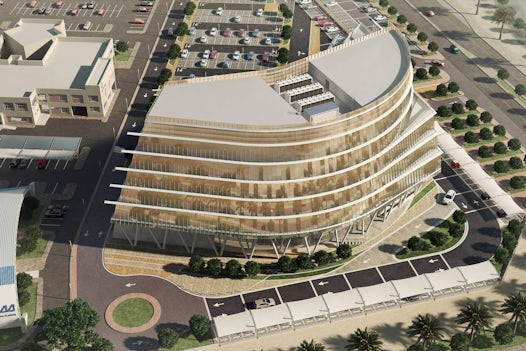
High-speed and high-density communication cabling
Cabling plays a key role in high-availability. The corner stones of a modern IT cabling system in the data centre field are flexibility and continuous application support for existing and future technologies. The corresponding plug-and-play systems should also offer space-savings in the rack and operate at transmission rates of up to 40 and 100 Gbit/sec.
You can essentially choose between three different approaches for the fail-safe high-speed data transmission solution in your data centre: classical ad-hoc cabling using copper and fibre-optic technology, a complete or partially pre-assembled solution with multiple cables (trunks), or a modular high-density fibre-optic solution, for example, the “Datwyler Data Centre Solution” (DCS) or the company‘s new developments, “HDPS” and “HD-DCS”.
For the classical solution – which may be preferred due to on-site demands or integration with legacy hardware – Datwyler offers you a wide range of high-quality data and patch cables, connecting technologies, distribution boxes, racks and accessories. All conceivable application areas are covered by this solution: from the cabling of small server rooms to complex installations with high-speed requirements.
Pre-assembled systems with trunk cables – cut to length and printed according to the customer‘s requirements, equipped with connectors or modules and pre-tested in the factory – offer you the advantage of much faster installation, simpler cable management and easier documentation. A solution like this requires more planning effort in advance but saves time and costs during the installation itself. The trunk cables, which are pre-assembled and capacity-determined in the laboratory, reduce not only the error rate but also the measuring expenditure on-site. With trunk cabling, adds and enhancements can also be quickly and easily implemented.
The Datwyler Data Centre Solution (DCS) is a future-safe, pre-assembled plug-and-go fibre optic solution which has been specially developed for high-density requirements in data centres. It features very high quality cable and components and high-precision connector manufacture. Because of its excellent optical and geometric properties, this solution is suitable for not just all of today’s high-speed applications, but also those of the future, such as 32GFC, 40/100G-Ethernet and 120G Infiniband. Modular components which can be configured in any required combination offer users the highest degree of design flexibility.
Datwyler´s latest system solutions, HDPS and HD-DCS, offer all this and even higher port densities of up to 72 or 96 LCD or MTP Ports per height unit.
The data centre cabling provided by Datwyler not only complies with the approved international standards ISO/IEC 24764, EN 50173:2011 (Europe) and TIA/EIA-942-2-2010 (SP-3-0092), but also generally exceed current standards and drafts by considerable margin offers – and therefore guarantee higher future viability and design flexibility.
The Datwyler solution portfolio covers the whole topology, from supply networks (external network interfaces, ENS), through the main distribution area (MDA) with core and switching racks to the horizontal or zone distribution area (HDA/ZDA) or to the server and central switch racks.
The selection of cables and connecting technology in data centres is determined by the network topology, IT components and selected cabling concept. There is a trend for new switching architectures and flat hierarchies (diverse data centre fabric models). But we also have a large number of typical architectures: top of rack switching, mainly used in high-density server environments, middle or end of row switching enabling the connection of several server cabinets, as well as integrated switching for blade server networks. In many cases we also realise a central distributor in a patched cross-connect environment. This architecture places significant demands on the quality of the cabling system components.
The cable support and routing system must take into account the type of cabling, the fire protection, the electromagnetic compatibility (EMC), the quality of the equipotential bonding in the building and the MICE environmental classification (according to EN 50173-1, for example). In addition it must be designed for future extensions to the system of communication cables.






